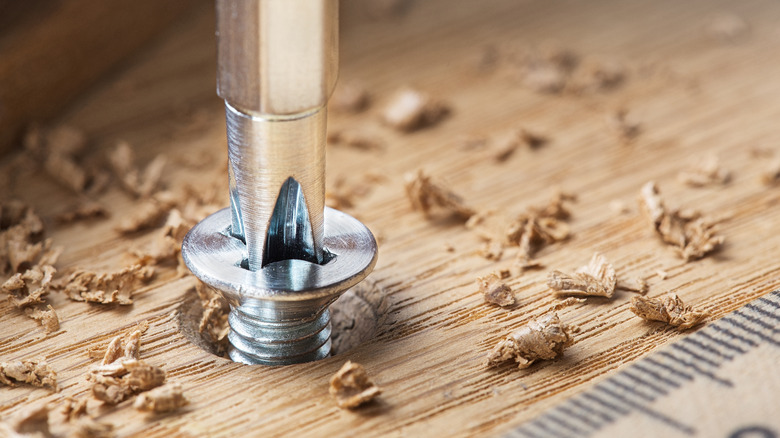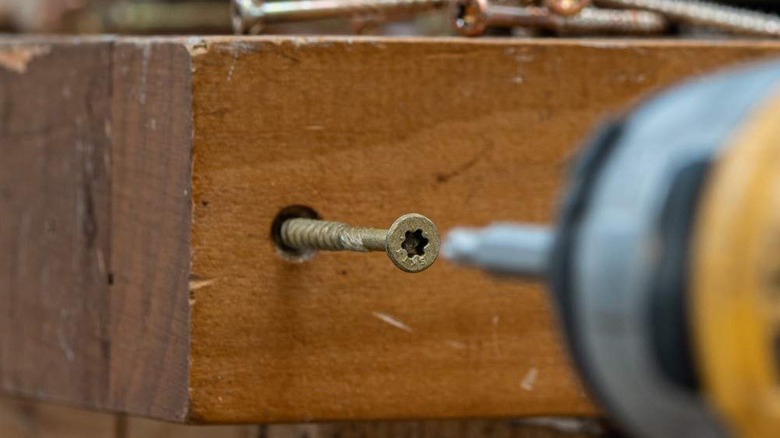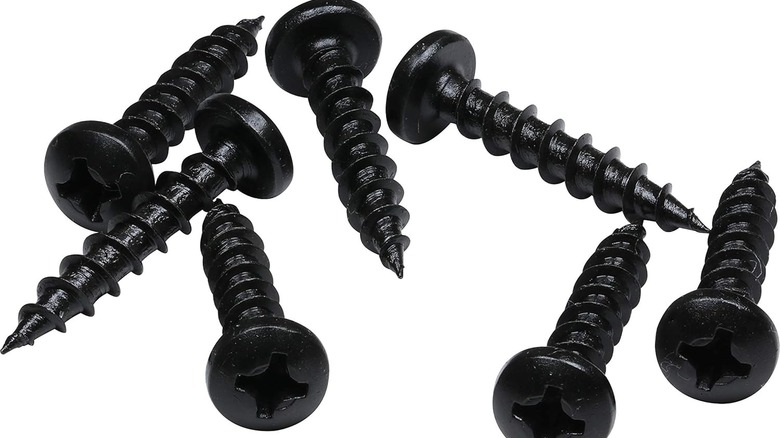Try These Types Of Screws For Woodworking If You Aren't Using Glue Or Nails
We may receive a commission on purchases made from links.
If someone grabbed a random screw from a woodworking shop and asked you to identify it, what would you say? If you just said, "it's a screw, what about it," that'd be understandable, but not quite right. Woodworking screws are actually quite the varied microcosm, with a massive number of combinations of heads, drives, threads, points, and materials. It's easy to just pick a screw and decide to drive it into an in-progress birdhouse, but the actual type of screw you use will determine how easy assembling that birdhouse will be, not to mention how well it holds in the type of wood you're using.
It would take far too long to cover every single permutation of woodworking screw in existence, so let's narrow the focus a bit to just drive heads and threads. Let's say you want a woodworking screw that's easier to drive in than a nail and more likely to stick in place than a glob of glue. In this case, your best bets would be screws with torx or Phillips-head drives, paired with either deep threads or QuickCutter threads.
Torx or Phillips-heads are easy to drive in
It's important to pick a good drive head when selecting a woodworking screw for two reasons: convenience and safety. Not all drive types can be driven down as easily — using a slotted flat head, for instance, is almost guaranteed to send your power drill flying off in random directions if you try for sustained drilling. That's already incredibly annoying, but if your drill is flying all over the place, you risk damaging your project, or worse, injuring yourself.
What you really want is a drive that your drill can jab firmly into and hold in place until you're done drilling. For this purpose, torx screws are an ideal choice. Torx screws are also known as star heads, because their drive patterns are shaped like a six-pointed star. Those six points ensure the tip of your drill is held firmly in place while you drive a screw in, and also make removing the screw a little easier if it's stripped. Don't worry if you don't have a torx bit for your drill; certain brands like Power Pro will include a free bit in boxes of torx screws if you buy them from stores like Amazon.
If you can't or don't want to use a torx screw, your next best bet would be the old standby, Phillips-head drives. They're cheap, common, they do a reasonably good job of holding your drill bit in place while you work, and you've almost definitely got a bit for them already. Compared to torx screws, you may still experience some slippage when drilling Phillips-heads, but certainly less than a slotted head.
Deep threads are resistant to pull-out, while QuickCutter threads are easier to drive in
So you've got a screw that you're reasonably sure your drill will work well with, but how well will it hold in its target? A big factor in determining that is the screw's threads, the little ridges that actually cut into the wood and drive the screw down. Slight differences in thread shape and composition will determine how well the screw enters wood, as well as how firmly it sticks in place.
If you want a screw that's resistant to pull-out force, consider getting one with deep threads. Deep threads, also known as coarse, production, or Lo-Root, have a smaller shank diameter than usual, which helps them to drive further into a surface with each rotation. One full turn gets them one pitch deeper into materials. This long stride helps a deep thread screw to stay strongly in place with reduced risk of pull-out.
Alternatively, if you want a screw that will penetrate materials quickly and cleanly, one with QuickCutter threads will serve you well. This is a brand-specific type of thread, Quickscrews to be precise. QuickCutter threads have a similar shank diameter to deep threads, but with the added benefit of a longer flute above the screw's point. This both preserves the holding power of deep threads and helps the screw penetrate materials faster and with less torque.


